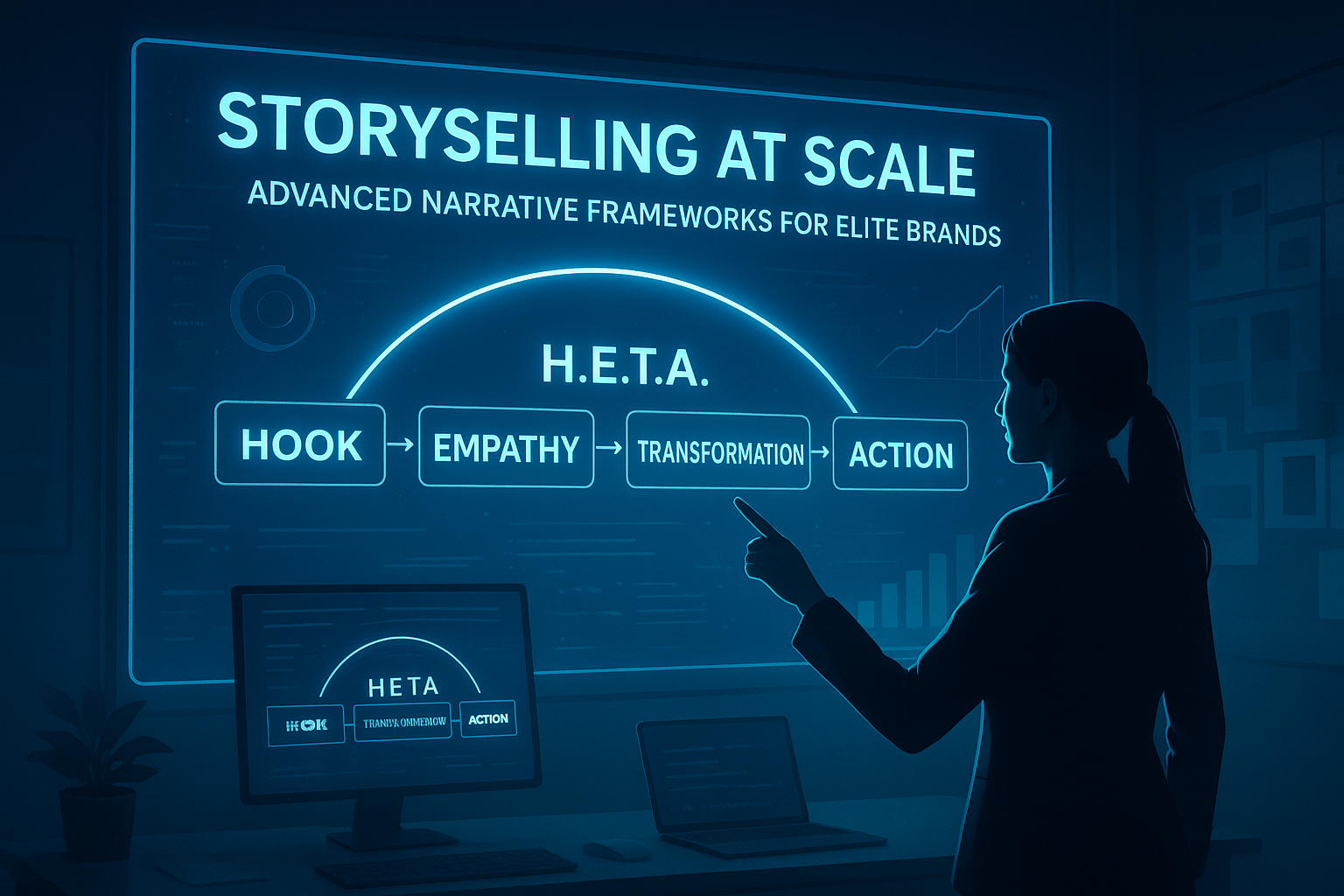Storyselling at Scale: Advanced Narrative Frameworks for Elite Brands
In today's digital landscape, filled with endless content and constant noise, elite brands are finding it increasingly difficult to stand out and connect with their audiences. Traditional advertising is losing its effectiveness, and even compelling storytelling isn't sufficient on its own. This is where storyselling comes in, a powerful combination of strategic storytelling and conversion-driven marketing that brings your brand's narrative to life and inspires action. Today, the most successful brands are not just telling stories; they are selling them at scale.
At Tekversify, we have helped brands evolve by implementing storytelling solutions that resonate across various platforms. Whether you're developing a brand from scratch or refining an established voice, this blog explores how advanced narrative frameworks can elevate your business from mere background noise to something truly unforgettable.
The Rise of Storyselling in the Age of Content Saturation
We live in an age of oversaturation. Every scroll, swipe, and search bombards users with more content than they can absorb. According to recent studies, the average person sees between 6,000 and 10,000 ads per day. In this hyper-competitive climate, storytelling alone isn't enough to drive engagement or action. That's why storyselling is emerging as a game-changer. Unlike traditional storytelling, storyselling is engineered for impact. It's a seamless fusion of story-driven content with specific intent, whether that's to generate leads, nurture relationships, or convert browsers into buyers. Think of it as the evolution of narrative strategy, fine-tuned to trigger emotional engagement and decision-making in a measurable, scalable way. Social media platforms like TikTok and Instagram have evolved into search engines. Users are less likely to "Google" information; instead, they "search" visually and emotionally, seeking relatable content, engaging stories, and inspiring creators. This shift encourages brands to adopt a mindset more akin to publishers rather than traditional broadcasters. To stand out in the crowded feeds, your narrative must be both captivating and actionable.Why Elite Brands Are Investing in Narrative Frameworks
Elite brands understand that a consistent narrative equals consistent trust. They're not just sharing stories; they're building strategic content ecosystems using proven frameworks to influence perception, loyalty, and behavior. These frameworks are designed not just for storytelling but for repeatable storyselling across different buyer journeys and touchpoints. At the core of this approach is brand strategy consulting, where brand voice, values, customer motivations, and market positioning are mapped into a coherent story arc. For example, Nike doesn't just sell shoes; they sell aspiration through every story they tell. Apple sells simplicity and innovation, not just devices. Airbnb's story isn't about renting homes but about "belonging anywhere." These stories aren’t just random narratives; they’re crafted with intention, using psychological and structural models that forge deep emotional connections with audiences. Rooted in frameworks like the Hero’s Journey, emotional branding principles, and H.E.T.A. (Hook, Empathy, Transformation, Action), each piece of content, whether a 30-second ad or an in-depth blog post, contributes to a cohesive and powerful narrative ecosystem.The Anatomy of Storyselling Frameworks That Scale
What makes a story-selling framework "scalable"? It’s not about producing more content; it’s about creating modular stories that can adapt and be deployed across various formats, channels, and stages of the customer journey. At the heart of scalable frameworks is a solid structure. One powerful model used by top content marketing agencies is the H.E.T.A. structure:- Hook: Capture attention immediately with a relatable problem or powerful insight.
- Empathy: Show a deep understanding of the audience's pain points.
- Transformation: Position your brand as the guide, offering a clear solution.
- Action: End with a compelling call to action that feels like a natural next step.

